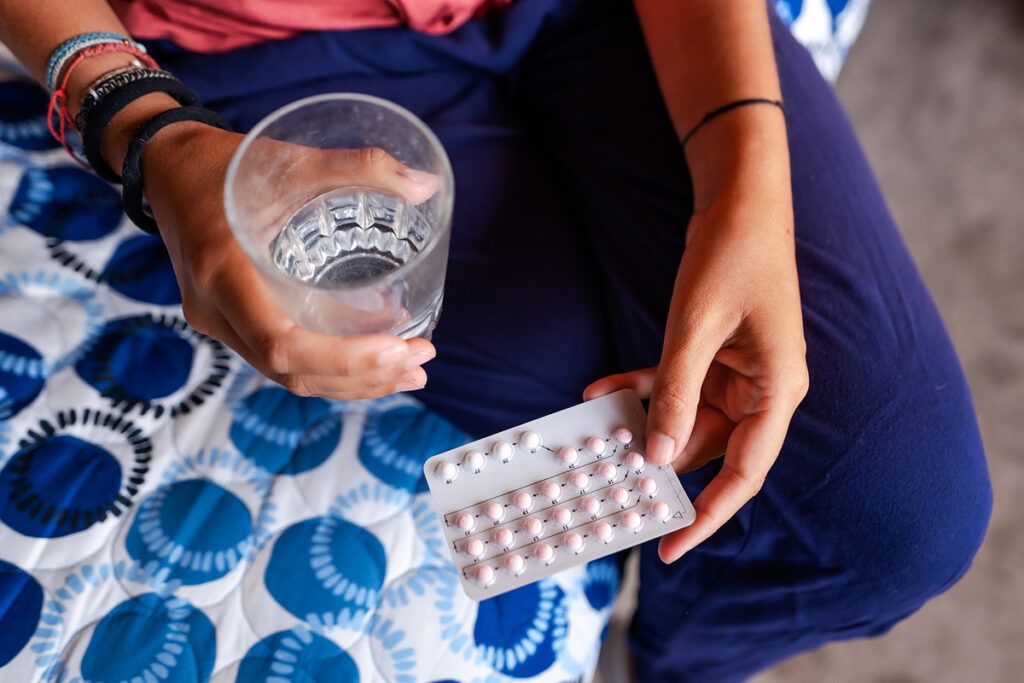Birth control pills come in different types and dosages. There are two main types of oral contraception: combination pills and progestin-only pills.
The combination pill, most commonly just called “the pill,” often contains the hormones estrogen and progestin. Progestin is the human-made (synthetic) version of progesterone. Progestin-only pills, as their name indicates, contain only progestin.
Combination pills come in different doses:
- Low dose: 35 micrograms (mcg) or less of a type of synthetic estrogen, like ethinyl estradiol
- High dose: more than 50 mcg of estrogen
Combination pills can come in different types, such as monophasic and multiphasic. Monophasic pills contain the same dose of estrogen and progestin in each pill. Multiphasic pills contain varying weekly doses of estrogen and progestin.
Progestin-only pills, also known as the minipill, come in only a single dose: 35 micrograms of progestin.
About 25% of females ages 15 to 44 in the United States have reported using birth control pills. Learning more about the benefits and disadvantages of low dose birth control pills versus high dose birth control medications, their key differences, and possible side effects can help you to choose the right birth control type for you.
Low dose birth control pills

Low dose birth control pills contain a lower dose of hormones. Low dose combination pills contain 10–35 mcg of estrogen.
Research from 2016 has shown that low dose birth control pills have the same effectiveness as high dose pills at preventing pregnancy, as long as you correctly and consistently take them. Low dose combination pills are 99% effective at preventing pregnancy when taken properly.
Because combination birth control pills have been linked to several health conditions, health professionals are likely to prefer to prescribe low dose birth control pills. Potential risks of combination pills include:
- breast cancer
- thrombosis
- cerebrovascular complications like stroke
- heart attacks
Yet according to American Family Physician, low dose birth control pills have higher rates of discontinuation — meaning that people stop using them more often. This is because they have side effects like bleeding, nausea, headaches, and weight gain.
Experts recommend that the best dose for most people who take oral birth control is between 30 and 35 mcg of ethinyl estradiol (synthetic estrogen).
Low dose combination pills include these brands:
- Apri
- Cyclessa
- Low-Ogestrel
- Microgestin
- Nextstellis
- Ortho Tri-Cyclen
- Seasonale
- Seasonique
- Yasmin 28, or Yaz
- Zovia
Low dose progestin-only birth control pills include the following brands:
Low dose birth control pills have some advantages and disadvantages, according to the U.K. National Health Service.
Pros of low dose birth control pills include:
- It can reduce acne.
- It can lower your risk of colon and ovarian cancer.
- Your menstrual bleeding can be lighter, more regular, and less painful.
- It can lower your risk of ovarian cysts and fibroids.
The cons of low dose birth control pills include:
- It can cause side effects like nausea, vomiting, headaches, and breast tenderness.
- It can raise your blood pressure.
- It is linked to an increased risk of blood clots and breast cancer.
- It can lead to breakthrough bleeding during the first months of use.
Remember that birth control pills, no matter their dosage, cannot protect you against sexually transmitted infections.
If you need help covering the cost of medications, the free Optum Perks Discount Card could help you save up to 80% on prescription drugs. Follow the links on drug names for savings on that medication, or search for a specific drug here.
